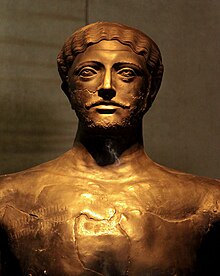Dhamar Ali Yahbur
- View a machine-translated version of the Arabic article.
- Machine translation, like DeepL or Google Translate, is a useful starting point for translations, but translators must revise errors as necessary and confirm that the translation is accurate, rather than simply copy-pasting machine-translated text into the English Wikipedia.
- Do not translate text that appears unreliable or low-quality. If possible, verify the text with references provided in the foreign-language article.
- You must provide copyright attribution in the edit summary accompanying your translation by providing an interlanguage link to the source of your translation. A model attribution edit summary is
Content in this edit is translated from the existing Arabic Wikipedia article at [[:ar:ذمار علي يهبر]]; see its history for attribution. - You may also add the template
{{Translated|ar|ذمار علي يهبر}}to the talk page. - For more guidance, see Wikipedia:Translation.
| Dhamarʿalī Yuhabirr | |
|---|---|
| king of Sabaʾ and ḏu-Raydān | |
 | |
| Reign | c. 135 – 175 |
| Predecessor | Yāsir Yuhaṣdiq |
| Successor | Tharan Yaub Yuhanim |
| Died | c. 175 South Arabian |
| Religion |
|
Dhamarʿalī Yuhabirr bin Yāsir Yuhaṣdiq (Ḏmrʿly Yhbr), was a king of Saba' and ḏu-Raydān from c. 135 to 175 CE. He ascended the Himyarite throne amidst clashes between Sabaʾ and Ḥimyar. The earliest mention of Dhamarʿalī Yuhabirr appears in an inscription dated to 137.[1] He ascends to the throne no later than 159.[2]
In the middle of the 2nd century, Dhamarʿalī Yuhabirr and his son Tharan Yaub Yuhanim controlled Kingdom of Saba. During his rule, reports show repairs were made to the irrigation-works (dam) at Marib.[3] Dhamarʿalī Yuhabirr handed his throne down to his son Thaʾrān Yaʿub, who succeeded him around 175.[4]
Bronze statues of the king Dhamar'alî Yuhabirr and Tha'rân were found in an-Nakhla al-Hamrâ in Yemen.[5] Sabaic inscriptions on Dhamar Ali's statue reads "the two kings of Sabaʾ and ḏu-Raydān, placed what they granted to their vassals" and "S²rḥs¹myd and Mgdm, of the family Ḏrnḥ, in the hall of their palace".[5]
References
- ^ Inscription:(Kh-Umayma 1).
- ^ Arbach, Mounir (2023). "DHAMĀRʿALĪ YUHABBIR". Ancient Arabia.
- ^ DASI: Digital Archive for the Study of pre-islamic Arabian -RES 4775+4776 RES 3441; Gl 551+1005. Archived 2023-06-26 at the Wayback Machine
- ^ Robin, Christian Julien - Arabia and Ethiopia - page 369 Archived 2020-01-30 at the Wayback Machine
- ^ a b DASI: Digital Archive for the Study of pre-islamic arabian -RES 4708 A). Archived 2023-07-18 at the Wayback Machine











